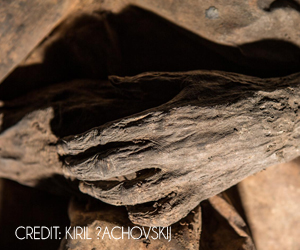Immunosuppressed people in Australia and US are at a higher risk of smallpox re-emerging in the world, according to an expert of infectious diseases.

‘People who have a weakened immune system will have greater risk of infection in smallpox epidemic.’





"Experts have long feared this scenario, and it is now a reality," says Professor MacIntyre, who is also Director of the NHMRC Centre for Research Excellence, Integrated Systems for Epidemic Response. "This highlights the real risk of smallpox re-emerging in the world, without terrorists needing to access closely guarded stockpiles of the virus." In the nearly 40 years since smallpox was eradicated, much has changed in society. Advances in medicine mean that many more people today live with a weakened immune system - such as people with HIV, people being treated for cancer and autoimmune conditions.
The study shows that children and young people aged 0-19 years will have the highest risk of infection in a smallpox epidemic. However, the risk of severe disease and death is in people aged >45 years. Almost 1 in 5 people in cities like Sydney and New York have a weakened immune system, which would make the impact of an attack with smallpox much more severe, research published in the US Centers for Disease Control, Emerging Infectious Diseases journal finds.
"The rates of immunosuppression were even higher for the age group 60-65 years, because of natural decline of the immune system with age. We have an ageing population, and this must be considered when planning for a bioterrorism attack and vaccination strategies during an outbreak," Professor MacIntyre says.
Professor MacIntyre has led a study that used a mathematical model to identify the impact of smallpox re-emerging in cities like Sydney and New York. The research identified that the highest rates of smallpox infection in these cities would be in people aged less than 20 years, but the highest death rates would be among people aged 45 and over.
Advertisement
The research therefore looked at whether past vaccination in older people gave much protection. Despite widespread past vaccination in New York, the modeled impact of smallpox in this city was more serious than in Sydney due to its larger number of immunosuppressed people.
Advertisement
"Vaccine immunity wanes over time, and recent vaccination is needed for protection. The good news is, people who have been vaccinated in the past would have a faster response to re-vaccination in the event of an outbreak," Professor MacIntyre says. "The bad news is, both cities show the highest smallpox infection rates for unvaccinated young people, aged 5-20 years."
The study also notes the importance of vaccination for health workers, and the need for hospitals to have appropriate isolation facilities to minimize the impact of a smallpox outbreak.
One of the study authors, Professor Mike Lane, Emeritus Professor from Emory University in the US and the former director of the US Centers for Disease Control Smallpox Eradication Program, says: "Should there be a smallpox attack with a virus similar to the virus which was eradicated, the prospects for bringing an epidemic under control are good, with good public health follow up and vaccination of contacts".
Source-Eurekalert












